Use an Anger Log to Get a Grip

Anger: The Misunderstood Emotion
Anger, often deemed the misunderstood emotion, can wreak havoc on relationships and unleash a cascade of stress hormones when left unmanaged. If you struggle with controlling this intense feeling, consider employing the classic anger management tool known as the Anger Log. But why should you?
In the words of renowned author Steven Levine, who penned “Waking the Tiger: Healing Trauma“:
“Rather than pushing down or ejecting such emotions, we can gently invite them into our awareness. By granting them space, we can explore their texture, their voice, and their tendencies. We shift from getting lost in my anger to investigating the nature of anger itself.”
So, What Is an Anger Log?
The Anger Log is a powerful tool designed to help you record and evaluate your anger, shedding light on its origins. It offers hope by documenting not just your struggles but also your progress.
Through this tool, you’ll track your triggers, the frequency of your anger, and the underlying emotions beneath it. You’ll come to realize that anger is often a secondary emotion, masking feelings like fear, hurt, or frustration.
By using the Anger Log, you’ll gain insight and develop effective strategies to channel your anger constructively. Additionally, you’ll build resilience. Get your copy of the Anger Log. and follow the simple instructions below.
How to Effectively Utilize the Anger Log
- Date: Simply record the date.
- Trigger Event: Document what happened that triggered your anger.Examples:
- Did someone reject your request?
- Did someone fail to uphold an agreement?
- Did someone collide with your vehicle?
- Your Self-Talk: Describe your thoughts during the incident.Examples:
- “She must comply, or I’ll lose my mind!”
- “This isn’t fair!”
- “It’s entirely their fault!”
- Physical Sensations: Note any physical reactions you experienced.Examples:
- Clenched teeth and fists?
- Racing heart and a knot in your stomach?
- An explosive sensation in your head?
- Anger Level: Rate your anger level based on your physical sensations, from 1 (very low) to 10 (off the charts). Enhance your awareness of bodily signals to detect anger sooner.
- Other Feelings: Identify the primary emotion you felt before anger took over.Often, anger masks other feelings. Was it sadness, fear, hurt, or frustration? Recognize and express these core emotions.
- Chosen Behavior: Document what you said or did in response to your anger.Examples:
- “If you don’t obey me, I’ll lose it!” while pointing aggressively.
- “This isn’t fair! I can’t stand you!” followed by tears.
- “You’re to blame for this mess! You $#%@$#!”
Keep your Anger Log for at least a month and gain a deeper understanding of your emotions. To further support your Anger Log journey, explore our insightful blogs and articles listed below.
Download Your Anger Log now and take control of your emotions!
Please check out these related posts:
- 7 Concepts to Get a Grip on Your Anger
- From Blowing a Fuse to Emotional Regulation
- How to Be Aware of Emotions and Use Feeling Words
- Five Steps to an Authentic and Research-Based Apology
- Fed Up with The Kids: How to Manage Parental Anger
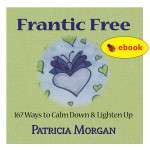 Also, consider purchasing my little stress management program, the Canadian Best Seller, Frantic Free, 167 Ways to Calm Down and Lighten Up. Only $2.95 in e-book format.
Also, consider purchasing my little stress management program, the Canadian Best Seller, Frantic Free, 167 Ways to Calm Down and Lighten Up. Only $2.95 in e-book format.

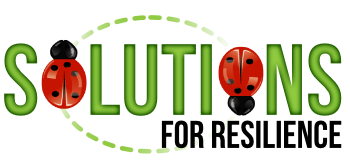
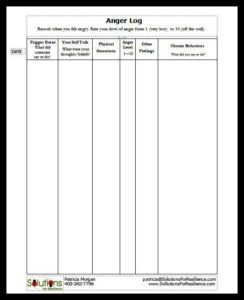
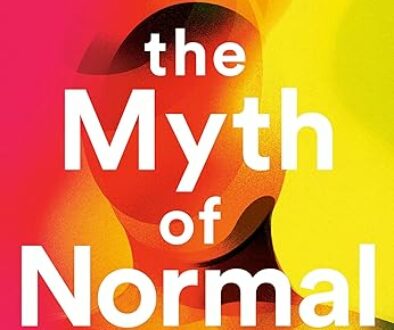

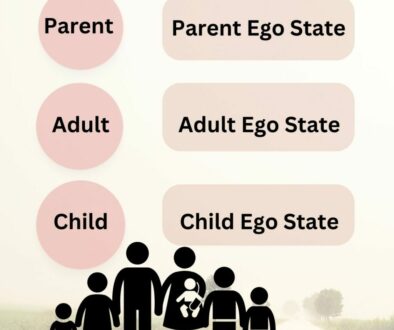
January 8, 2022 @ 4:13 pm
I’m grateful for all your posts, Patricia. A hearty thanks to you for sharing your knowledge and counseling skills, and especially for your book. Be heard and be happy.
January 10, 2022 @ 6:39 pm
Thank you, Sue for checking in, reading, and your expression of appreciation. 🐞❤️
July 26, 2019 @ 1:15 am
As an anger management therapist, I use Music Therapy which is an innovative concept that has been extremely effective with kids, adults, men, women, and forensic offenders who have committed crimes due to anger and anger-related disorders.
July 26, 2019 @ 10:14 pm
Thank you for your dedicated work and sharing, Roshan.